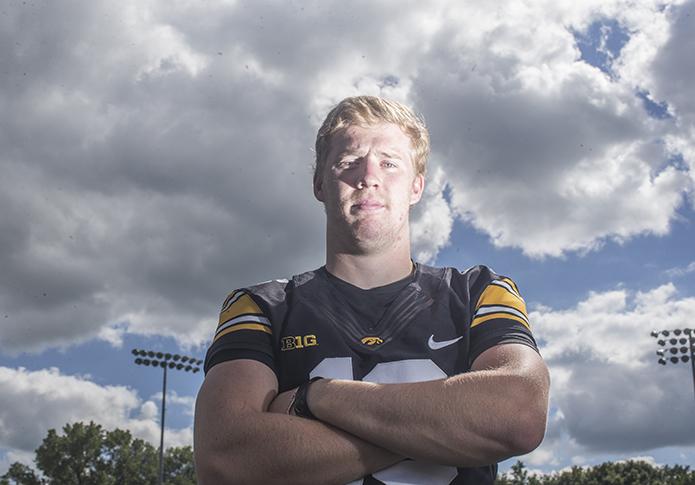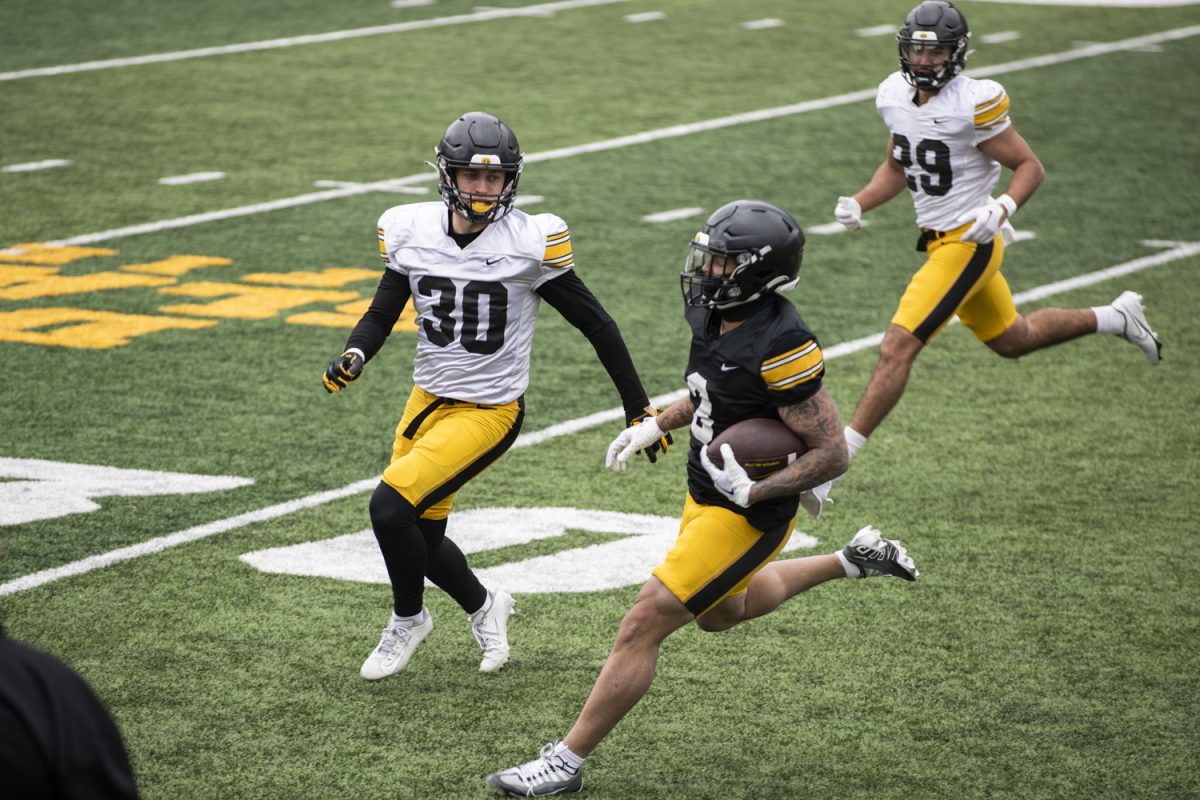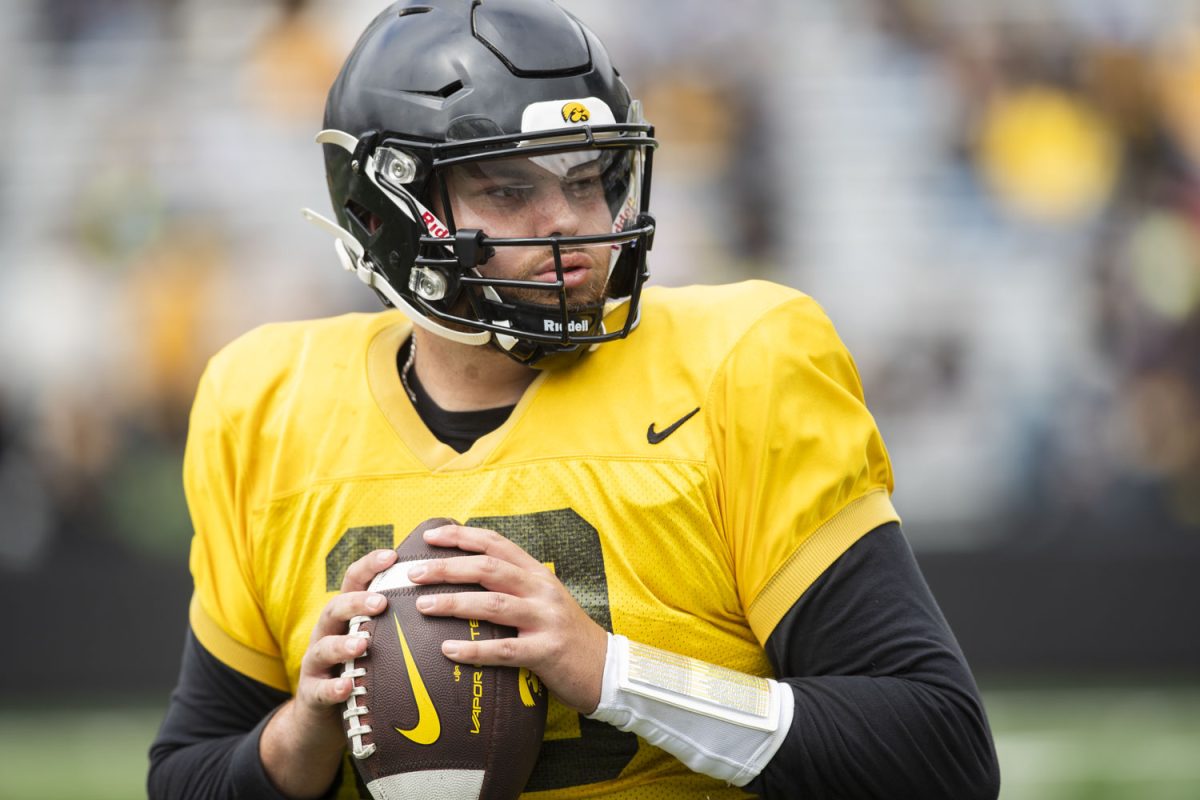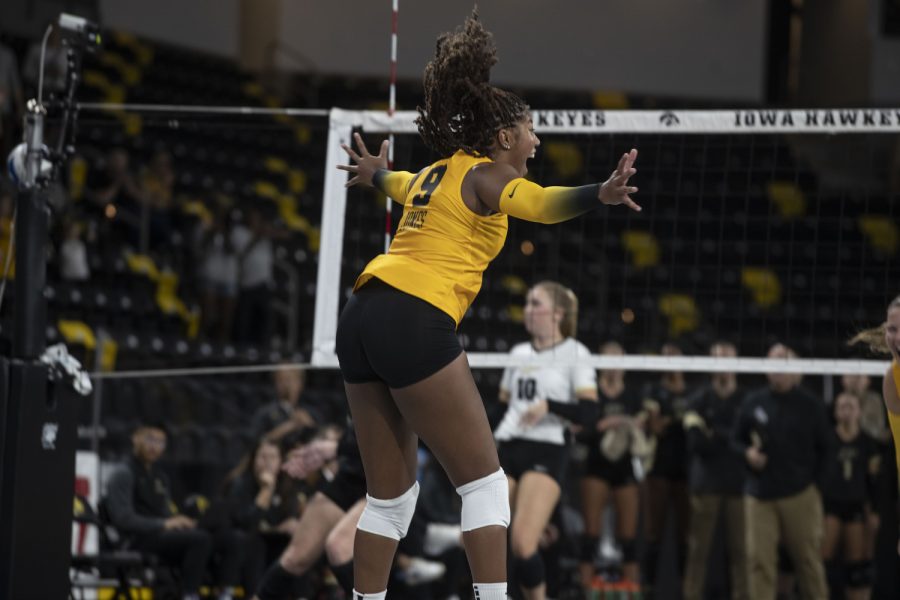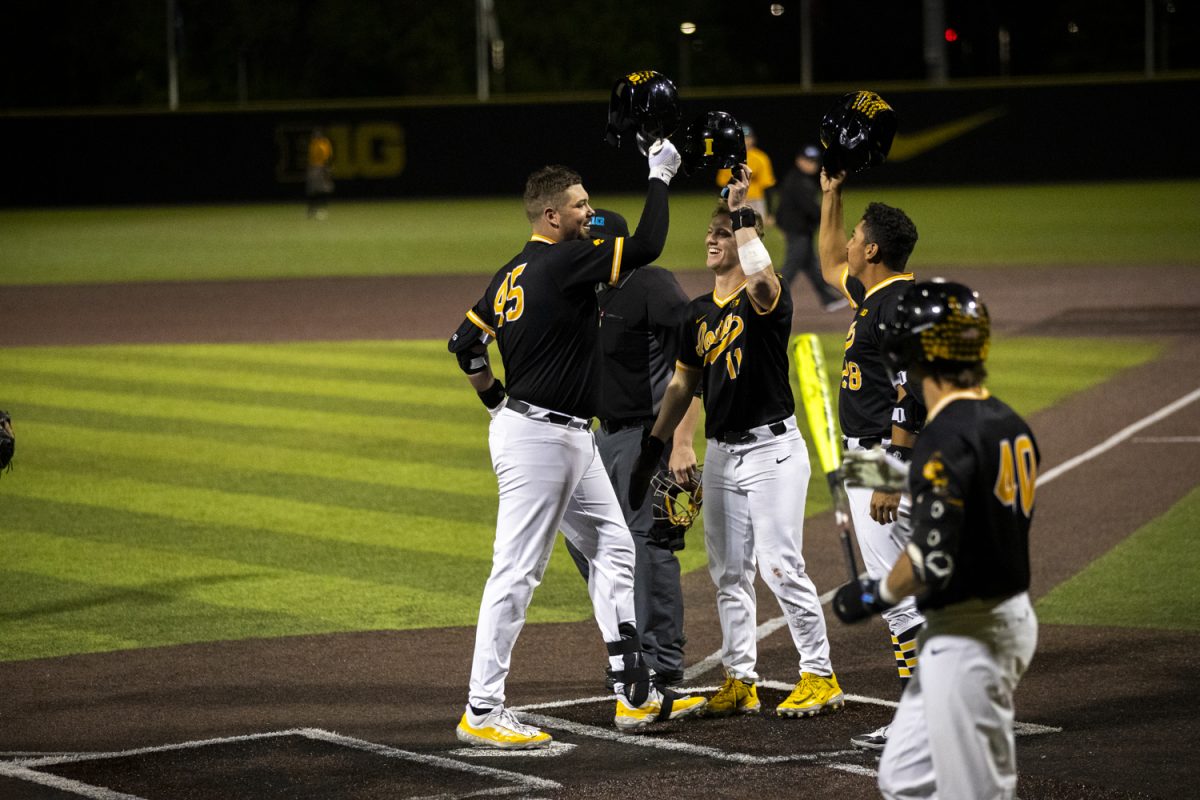What can Hawkeye fans expect from C.J. Beathard in his senior season?
By Jordan Hansen
One of the major keys to Iowa’s Big Ten Championship run last season was the emergence of C.J. Beathard as an elite quarterback in the conference.
A second-team Big Ten performer, he was a big part of Iowa scoring more than 30 points per game and averaging nearly 400 yards of offense per contest. It’s not hard to imagine these numbers might have been even higher had he not been dealing with a lingering groin injury most of the season.
Beathard has shown significant improvement during his years at Iowa, and while last season was his first as a starter, his tendencies during previous years tell a lot. First off, let’s use the passing and rushing splits from his career as a place to begin a look at his performance.
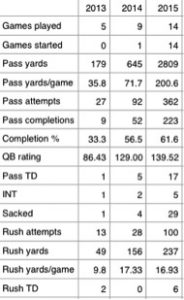
Off the bat, several things jump out. First, Beathard took care of the ball and was efficient in his passing all season. His 200.6 passing yards per game isn’t super impressive, but think about the context. Iowa’s game plan last year was to run the ball (to the tune of 181 yards a game) and chew the clock.
When Beathard did get a chance to let loose with his arm, he excelled. His completion percentage was third-best in the league, and he had 16 passes of 30 or more yards — tied for fourth-best in the league.
He also is a legitimate dual-threat quarterback, a first for Iowa since Brad Banks (more on that comparison a little further down). In Iowa’s first three games, Beathard put up 142 yards of offense on the ground including two great runs against Iowa State in the second week of last season.
While an injury in Iowa’s third game against Pittsburgh slowed down his rushing attack, he still managed to put up positive rushing yardage in all but three of the final 11 games. This is difficult for any college quarterback in a pro-style offense, as sacks negatively affect a quarterback’s rushing yardage.
Beathard is certainly not a run-first quarterback, and honestly, there really isn’t a reason for him to be. He doesn’t need to compensate for below-average passing ability by running, and there are enough solid role players on the team that he didn’t (and won’t) have to do everything himself.
While we’re on the topic of Iowa dual-threat quarterbacks, let’s compare Beathard to a certain early 2000s Iowa quarterback.
THE BANKS COMPARISON
Let’s get one thing out of the way. Football has changed significantly since the early 2000s. Stats are more bloated, which is directly correlated to the rise of spread offenses and the overall decline in the importance of defense.
With that said, from the moment Beathard showed any semblance of being able to run the ball, it was a virtual certainty he’d start to pick up Brad Banks comparisons. There was never going to be a way around it, and Iowa head coach Kirk Ferentz even brought him up during Iowa’s recent media day.
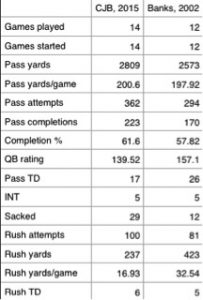
It also goes far deeper than simple statistics.
When asked “C.J. seems like he’s the kind of quarterback that makes guys around him better. How does he do that, and how do you guys see that?” Ferentz had this to say:
“I’m not saying he’s Brad Banks, but there are some parallels in the way he carries himself and just the way he does things. The thing about Brad was just the way he did things and the way he was, like people just kind of gravitated toward him … our team really went with him.”
Then, he specifically brought Beathard into his thought.
“C.J. has kind of got that same characteristic. There’s just something about him. And the commonality there is they’re both genuine people. They’re just really genuine guys. They’ve got all the right motives and agendas.”
While these are more overarching themes of personality, there’s more to this comparison. They, along with Ricky Stanzi in 2009, are the only quarterbacks in Iowa history to win more than 11 games in a single season. Granted there are more games on the schedule now than in the past, but it’s still an interesting notation.
Banks did have 9 more touchdowns, but that is likely correlated to the 17 fewer times he was brought down for a sack. Both players were fairly accurate, though Beathard did throw significantly more. That said, both were extremely efficient players and limited their turnovers.
Banks also had running back Fred Russell lining up behind him in the backfield (he ran for more than 1,200 yards in ’02), which also was a big chunk of Iowa’s offensive production. This also is important when considering Banks’ sky-high QB rating — he had a lot of pressure taken off of him by the running game.
Even their quarterback controversy/pre-breakout seasons are incredibly similar, statistically speaking. Banks was fighting with Kyle McCann for time during the 2001 season, while Jake Rudock barely held off Beathard in 2014.
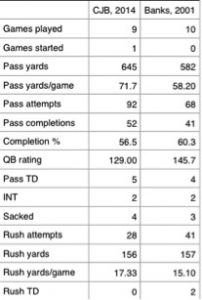
The tendencies of both players are very pronounced: It was obvious both players didn’t mind tucking the ball and heading downfield. Their efficiency was also on display in the limited playing time they got.
One thing to note — Beathard’s completion percentage did jump by about 4 percentage points, while Banks’ did drop a little. Remember, though, this was fairly limited time.
So what’s next?
If Beathard can stay healthy, his ceiling goes up tremendously.
He will probably find himself in the conversation for various awards throughout the season, as well as potential draft scenarios. It’s fair to expect more from Beathard this season, and he will need to continue to progress.
There are some questions to be answered at wide receiver, which could have a fairly significant effect on Iowa’s game plan. The only proven receiving threats are Matt VandeBerg and George Kittle. That’s pretty much it.
There will be growing pains, but if a player such as Jay Scheel or Jerminic Smith can take a big step, it will help matters. Starting running back LeShun Daniels has an injury history, making this all the more urgent.
However, if things do go well, Beathard will be in for a career year. He has a great handle on the offense, stability, and the trust of the coaches as well as a significant amount of potential.
His health could lead to more designed runs, which would be a huge boon for the Hawkeye offense. It opens things up and gives offensive coordinator Greg Davis more options during the game.
Beathard proved last year he is a bona fide playmaker, and this season will be another chance for him to add to his legend.
Follow @JordyHansen for Iowa football news, updates, and analysis.




